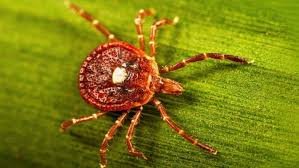
The Silent Threat: A Lone Star Tick Bite Led to a Fatal Red Meat Allergy
Imagine a delicious meal turning into a life-threatening ordeal. This is the grim reality for those affected by Alpha-gal Syndrome (AGS), a perplexing and potentially fatal allergy to red meat, primarily triggered by the bite of a lone star tick. Recent findings have brought this often-misunderstood condition into sharp focus, documenting what researchers believe is the first known death directly attributed to AGS.
The tragic case of a 47-year-old New Jersey airplane pilot serves as a sobering reminder of the silent danger lurking in our environments. After enjoying a hamburger at a barbecue in 2024, the man succumbed to an unexplained death. An earlier episode, hours after a steak dinner, left him with severe abdominal pain, vomiting, and a chilling premonition: “I thought I was going to die.” Post-mortem analysis of a blood sample confirmed an allergic reaction, strongly suspected to be AGS, stemming from what were initially believed to be ‘chigger’ bites, but later identified as likely lone star tick larvae encounters.
What is Alpha-gal Syndrome? Understanding the Tick-Borne Red Meat Allergy
Alpha-gal Syndrome isn’t your typical food allergy. It’s a delayed allergic reaction to a sugar molecule, alpha-gal (galactose-α-1,3-galactose), found in most mammals (pigs, cows, lamb, venison) and also in the saliva of certain ticks, notably the lone star tick (Amblyomma americanum) in the United States. When a lone star tick bites a human, it can transmit this alpha-gal molecule into the bloodstream. The human immune system, recognizing alpha-gal as a foreign invader, produces antibodies to fight it off.
The crucial distinction with AGS is the delayed onset of symptoms, typically 2-6 hours after consuming red meat. This delay often makes diagnosis challenging, as individuals may not immediately connect their symptoms to a meal eaten hours earlier. Symptoms can range from mild hives and gastrointestinal upset (abdominal discomfort, diarrhea, nausea, vomiting) to severe, life-threatening anaphylactic shock.
The Growing Threat: Lone Star Ticks on the March
While AGS has been identified for some time, its prevalence appears to be increasing. The Centers for Disease Control and Prevention (CDC) reported over 110,000 suspected cases between 2010 and 2022, but estimates the true number could be as high as 450,000 due to underdiagnosis and lack of awareness. A startling 42% of surveyed healthcare providers admitted they had never even heard of the disease in a July 2023 CDC report.
The lone star tick, easily identifiable by the distinctive white spot on the adult female’s back, is primarily found in the South, East, and Central states of the U.S. However, experts like Saravanan Thangamani, director of the SUNY Center for Vector-Borne Diseases, note a concerning trend: these ticks are expanding their geographic range northward. His lab in New York observed a doubling of lone star tick encounters in 2024 compared to 2023, spreading across more counties than ever before. This expansion means more people in new areas are at risk of encountering these disease-carrying arachnids.
Protecting Yourself: Prevention and Awareness are Key
There is currently no vaccine for Alpha-gal Syndrome. The primary defense against this tick-borne red meat allergy is prevention of tick bites. Physicians recommend a multi-pronged approach:
- Repellents: Use EPA-approved insect repellents containing DEET, picaridin, or oil of lemon eucalyptus.
- Protective Clothing: When in wooded or grassy areas, wear long sleeves and pants, tucking pants into socks.
- Avoid Habitats: Stay away from tall grass, brush, and leaf litter where ticks thrive.
- Tick Checks: Conduct thorough full-body tick checks after spending time outdoors. Pay close attention to hair, ears, armpits, navel, and behind the knees.
If you find a tick, remove it promptly and correctly with fine-tipped tweezers. Saving the tick in a sealed bag can be helpful for identification and potential testing by medical professionals, though it’s important to consult with your doctor on the best course of action. Rapid removal significantly reduces the risk of transmission of tick-borne pathogens, including alpha-gal.
Living with Alpha-gal Syndrome: Dietary Changes and Medical Guidance
For those diagnosed with AGS, the path to recovery involves strict dietary changes. Avoiding all mammalian meat products (beef, pork, lamb, venison, rabbit) is crucial. Some individuals may also need to avoid dairy or gelatin, as alpha-gal can be present in these products too. Consulting with an allergist and a registered dietitian specializing in food allergies is essential to manage the condition effectively and ensure proper nutrition.
The American Gastroenterological Association (AGA) advises that individuals experiencing unexplained symptoms like chronic diarrhea, nausea, and abdominal pain, especially those with a history of tick exposure, should be tested for alpha-gal syndrome. Early diagnosis can prevent severe reactions and improve quality of life.
Stay Vigilant Against the Lone Star Tick
The documented fatal case of Alpha-gal Syndrome is a stark warning. The increasing prevalence and expanding geographic reach of the lone star tick demand heightened awareness and proactive prevention strategies. By understanding the risks, recognizing the symptoms, and taking appropriate precautions, we can better protect ourselves and our communities from this emerging and potentially deadly tick-borne illness.




